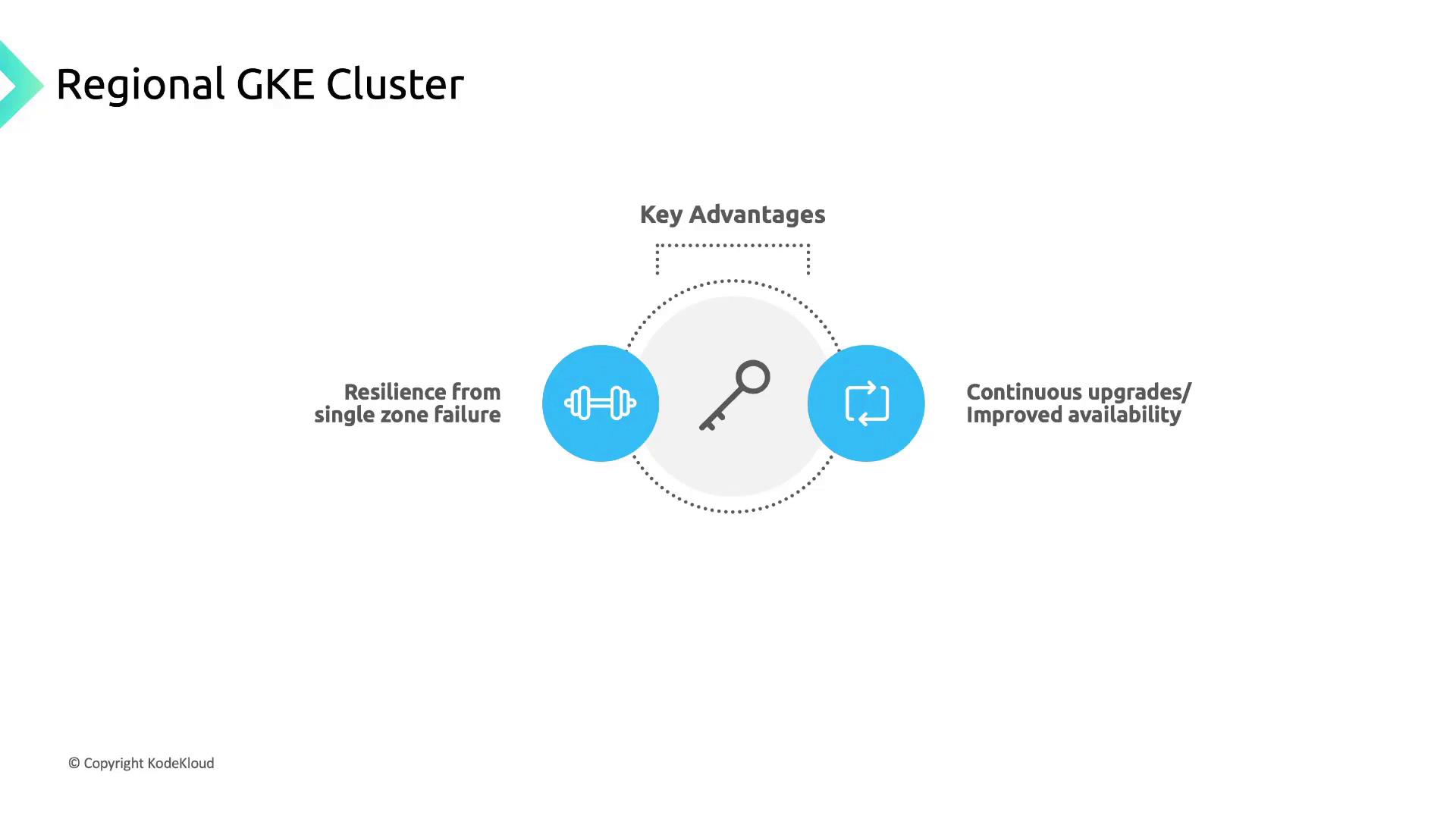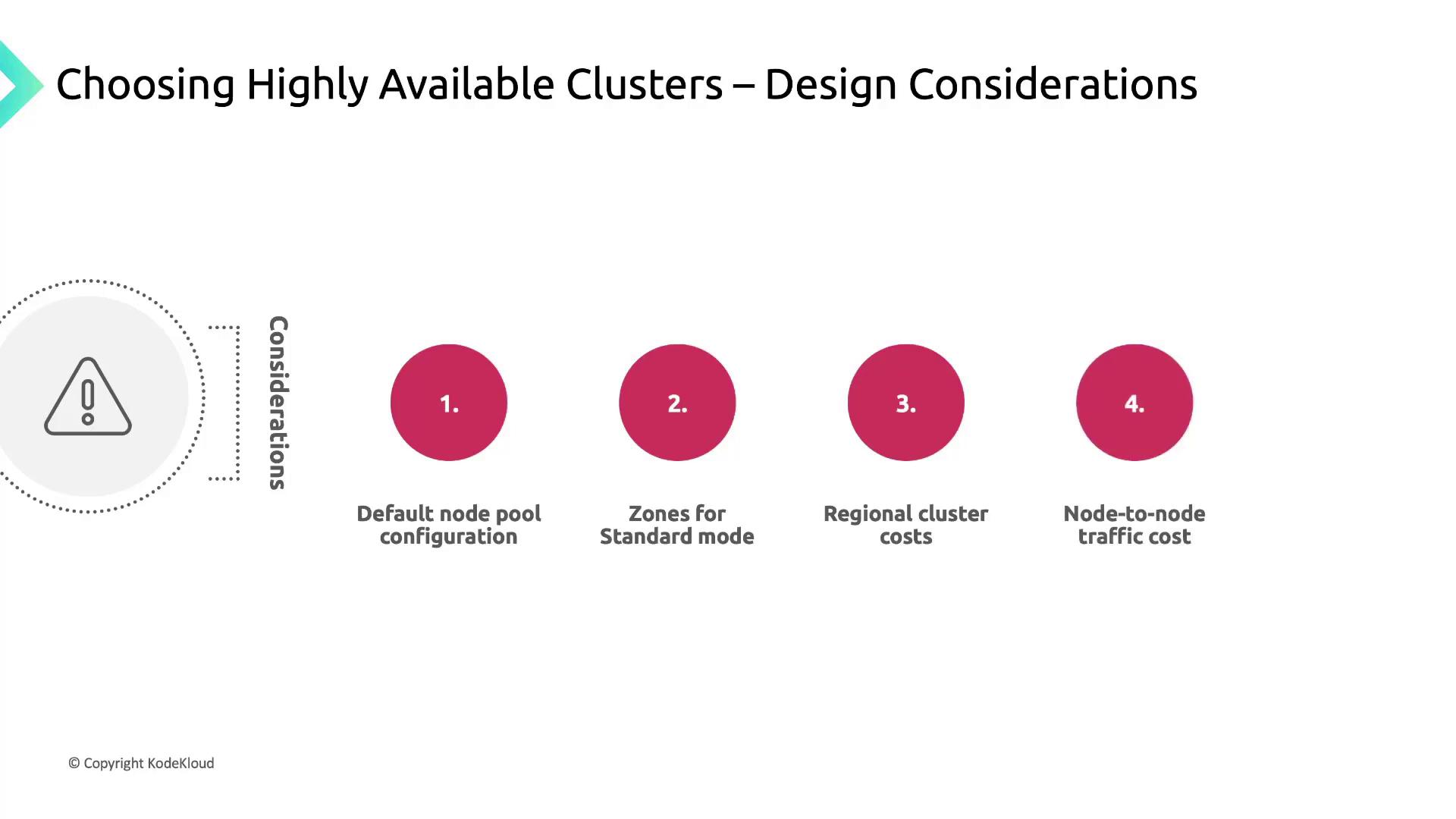GKE - Google Kubernetes Engine
GKE Design Considerations
High Availability clusters
Google Kubernetes Engine (GKE) regional clusters enhance reliability by replicating both the control plane and worker nodes across multiple zones within a region. The control plane spans three zones by default, so even if one zone fails, your cluster remains fully operational.
Production Recommendation
For production workloads, regional clusters are strongly recommended over zonal clusters to maximize uptime and resilience.
Why Choose Regional Clusters?

| Feature | Zonal Cluster | Regional Cluster |
|---|---|---|
| Control plane distribution | Single zone | Spread across three zones |
| Node failure tolerance | Single-zone failure risk | Automatic failover to remaining zones |
| Control plane upgrade behavior | Brief API downtime | Rolling upgrades with zero API downtime |
| Workload availability | Limited by one zone only | Maintained capacity across multiple zones |
Key Benefits
- Resilience to single-zone failures
Redundant control plane replicas and worker nodes in other zones ensure workloads keep running. - Seamless control plane upgrades
Rolling upgrades occur without interrupting API access or workload scheduling. - Enhanced workload availability
Distributing pods across zones preserves capacity during zonal outages.
Cluster Configuration and Quotas
When you create a regional standard cluster, the default node pool provisions nine nodes (three per zone), consuming nine IP addresses. You can adjust to as few as one node per zone. Consider the following:
- Zone alignment: Standard-mode node pools must reside in the same region as the control plane. Modifying zones applies to both existing and new nodes.
- Quota usage: Regional clusters draw more regional compute and IP addresses compared to zonal or multi-zonal clusters.
- Pricing impact: Review Compute Engine quotas and Compute Engine pricing to estimate additional costs.
Cross-Zone Traffic Costs
Workloads communicating across zones incur network egress charges. For the latest rates, consult the Compute Engine Pricing page.

Cost Alert
Cross-zone pod-to-pod traffic and control-plane communications may generate egress fees. Plan your network topology accordingly.
Over-Provisioning for Zonal Failures
To ensure consistent capacity during a zone outage, configure your node pools with higher maximum node counts. For example, in a three-zone cluster:
- Default sizing: 3 zones × 4 nodes = 12 nodes total
- 150% over-provisioning: 3 zones × 6 nodes = 18 nodes total
If one zone fails, GKE can automatically scale up to 12 nodes spread across the remaining zones, maintaining service availability without manual intervention.
Best Practices and References
| Resource | Description |
|---|---|
| GKE Best Practices guide | Production-ready architecture patterns |
| Compute Engine Pricing | Egress, regional network, and VM pricing |
| Multi-Region Cluster Patterns | Strategies for global GKE deployments |
Links and References
Watch Video
Watch video content